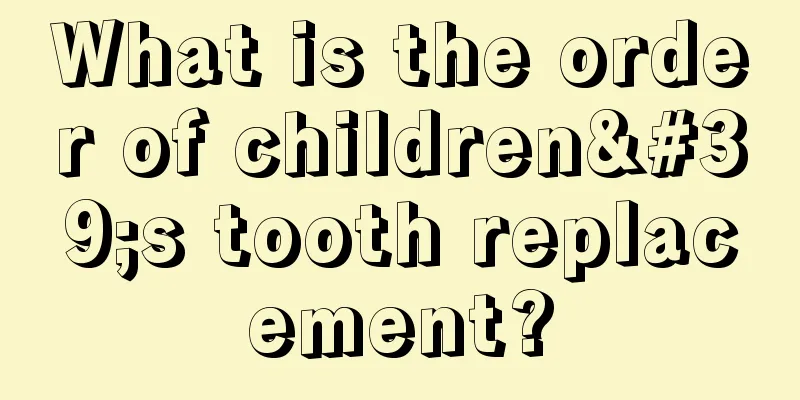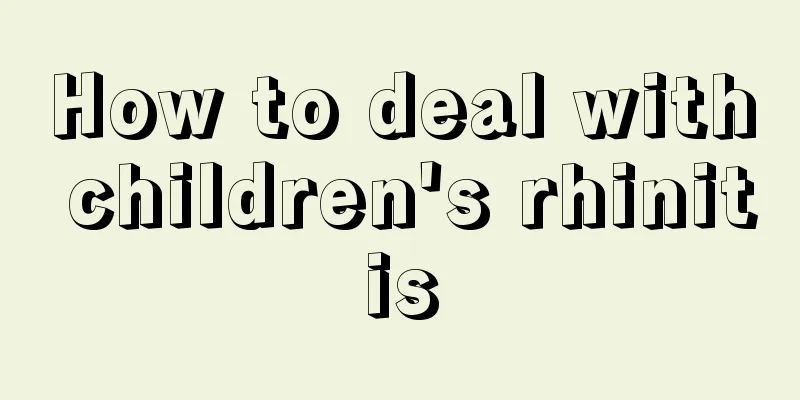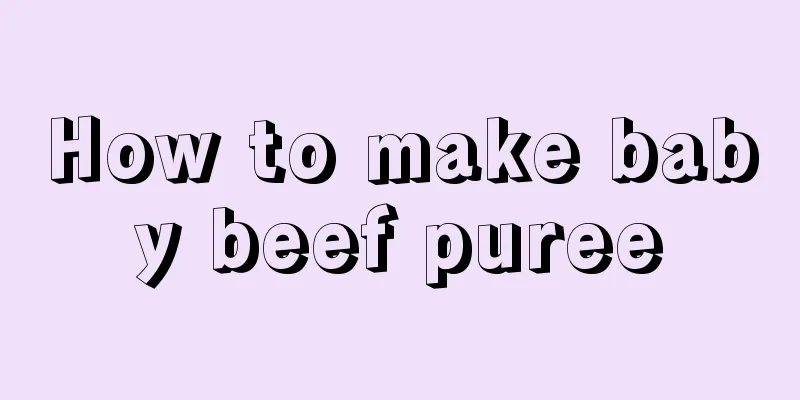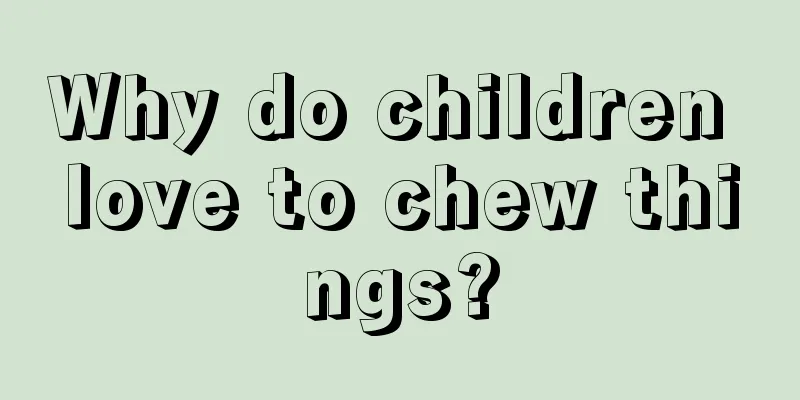What is the order of children's tooth replacement?

|
As children grow older, they need to replace their teeth. Generally, the age of tooth replacement starts at 6-7 years old. Due to different physical constitutions and diets, the age of tooth replacement will continue to around 9-10 years old. Usually, it will start with the upper incisors or canines, and the back molars and molars will be replaced at the age of 10-12. You can eat more calcium-rich foods to supplement the nutrition of your teeth. Tooth replacement order Generally speaking, children's teeth change in a symmetrical manner, with the upper and lower rows of teeth changing first and then the lower ones. The order in which children replace their teeth is: (1) When children are 6-8 years old, they begin to grow their first permanent teeth, the central incisors, and the first molars also gradually grow out; (2) When children reach 8-9 years old, lateral incisors begin to grow; (3) Children aged 10-12 years old begin to grow bicuspids, starting with the first bicuspids, which are next to the lateral teeth; (4) When children are 11-12 years old, the upper and lower canines have gradually grown out; (5) Children aged 12-13 begin to grow second molars; (6) The last third molar, also known as the wisdom tooth, does not begin to grow until the child is 17 years old, and will continue to grow until the age of 21, which varies from person to person. Precautions for children's tooth replacement 1. Always pay attention to the development of teeth Always pay attention to the growth of children's deciduous teeth and permanent teeth, and take children to see a dentist regularly so that problems can be discovered at any time and resolved early. 2. Develop a good habit of brushing your teeth Children should be urged to brush their teeth every day. It is best for adults to help brush their teeth before going to bed at night, especially the upper teeth which are more difficult to clean and are most likely to cause tooth decay. The six-year molars are also not easy to brush because they are located at the innermost part of the mouth. You should use toothpaste and toothbrushes specially designed for children. The toothbrush head should be as small as possible, otherwise the child will easily vomit when the toothbrush reaches the innermost part. In addition to brushing teeth, it is best for children to rinse their mouths after each meal to maintain oral hygiene. 3. Eating hard food During the period of children's tooth replacement, they should eat more foods that are high in fiber and have a certain degree of hardness, such as fruits, carrots, beans, corn, etc., to maintain a good stimulation to the deciduous teeth and promote the shedding of deciduous teeth on time. On the other hand, it also helps to stimulate the facial and eye muscles through chewing movements, accelerate blood circulation, and promote the development of gums, jaws and facial bones, which is both healthy and beautiful. 4. Promote calcium absorption To enhance children's calcium absorption, encourage your baby to eat more foods high in calcium, such as milk, cheese, tofu, canned fish, etc. At the same time, they should take in enough vitamin C and D, because these two vitamins are helpful for calcium absorption. 5. Avoid breathing through your mouth Try to prevent children from breathing through their mouths while they sleep. This is because when air flows through the mouth, the upper palate is subjected to upward pressure and cannot develop downward normally, causing the upper palate to bulge upward, and the left and right sides of the upper dental arch to become narrower, with the front part protruding forward. As a result, the erupted incisors not only tilt forward, but also are misaligned, forming gaps in the teeth. 6. Correct bad habits It is necessary to correct some bad habits of children in time, such as sticking out the tongue, biting the tongue, biting fingers or pencils, licking teeth with the tongue, etc. These bad habits will affect the growth of children's teeth and cause tooth deformation. |
<<: Is eczema in children a sign of body detoxification?
>>: What should I do if my baby has a hot head and body?
Recommend
Can babies eat pig blood?
In the eyes of many people, there are viruses and...
Congenital esophageal atresia in newborns
Pregnant women should strictly follow the doctor&...
Sores on the child's arm
In life, many people often get sores on their ski...
What to do if your child has dry cough
Dry cough in children can make parents worry. If ...
How to prevent motion sickness in children
With the continuous improvement of people's s...
What to do if your child has eczema at the corners of his mouth
It is also common for young children to have ecze...
Can I use safflower oil to treat a bump on my child's forehead?
In our lives, many children often hit their foreh...
What changes will occur in the color of baby's stool after eating complementary food?
As the baby grows older, it is necessary to add s...
How to treat nosebleeds in children?
If children are not careful when eating or playin...
One month old baby with stuffy nose
Many children have nasal congestion problems shor...
What should I do if my child’s teeth fall out?
It is well known that the eruption of baby teeth ...
How much milk is appropriate for a baby to eat in half a month?
Without realizing it, the baby grows very fast. W...
What are the folk remedies for children's cold and fever?
Children generally have weak constitutions, and m...
How to reduce swelling of child's hand
If a child has swollen hands, parents must unders...
What should I do if my child has a fever and talks nonsense?
Children's fever is generally not very seriou...









